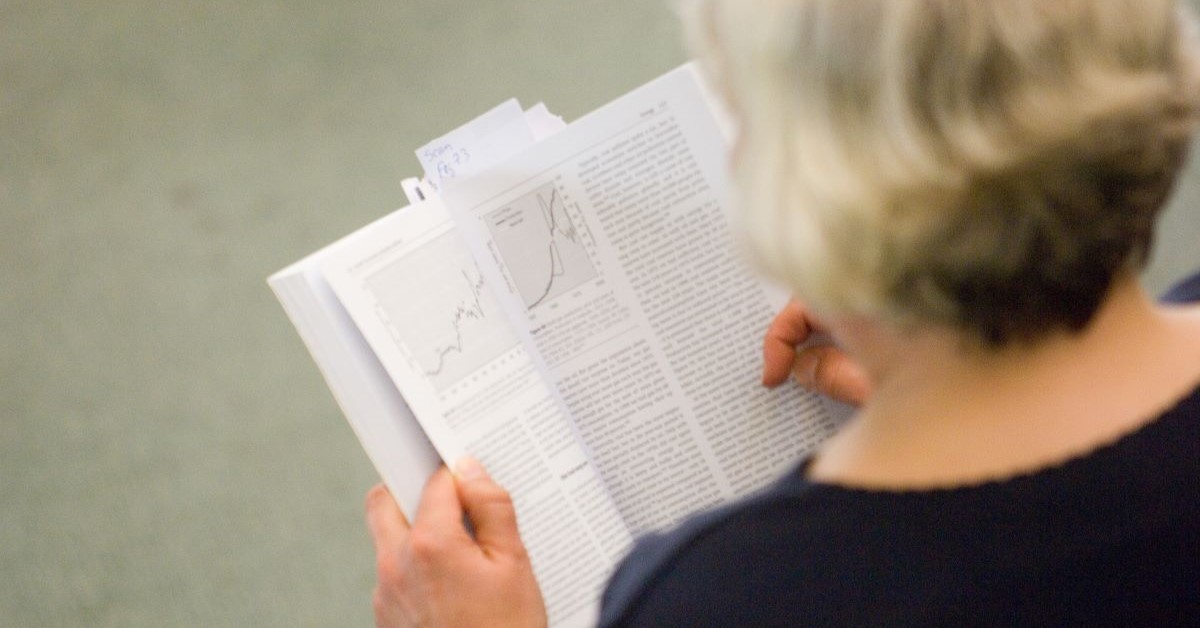Business Data Analytics in action: The practice of dynamic pricing
14/02/2024

We are amid a data analytics revolution, where successful business strategy depends on the judicious combination of product/service quality, data analytics and human talent. McKinsey estimates that by 2025, smart workflows and seamless interactions among humans and machines will be standard in the workplace[1]. The potential of business data analytics is showcased by the practice of dynamic pricing, also known as surge pricing, which has been shown to have a significant positive effect on business revenue. However, one of the main challenges of deployment will be the adequate sourcing of human talent capable of combining the level of technical and business knowledge needed to make dynamic pricing successful.
Dynamic pricing is the practice of charging different prices to customers according to market conditions. The chances are you have already experienced dynamic pricing. For instance, you may have noticed that hotel rooms are less expensive on Mondays, relative to Fridays; booking holidays outside of school term dates are more expensive than in term time; train tickets more expensive during rush hours, drinks get more expensive closer to the match kick-off time in football stadiums. Dynamic pricing ensures that when demand for a product or service is high, the price rises accordingly. However, when demand declines, so does price. Dynamic pricing can be thought of as a real-time variation in prices to match customer willingness to pay.
The practice of dynamic pricing offers distinct benefits to businesses relative to selling a product at a single price on a ‘first-come-first-served’ basis. During peak demand, price will rise ensuring scarce products/services are allocated to those customers with the highest willingness to pay, maximising revenue. As demand falls, price also falls, encouraging customers to buy more so that, for instance, a hotel room is not left empty, or a product goes to waste. There are customer service benefits too. Periods of high demand can overwhelm a company’s capability to adequately service customers. In these circumstances, limiting demand through higher prices can solve this problem. Conversely, in periods of low demand, which underutilise the company’s customer service functions, price can be lowered to stimulate demand.
A variety of studies have shown that dynamic pricing is capable of increasing company revenue from anywhere between 1 and 8% per year, relative to pricing on a first-come-first-served basis. Businesses are now alive to the possibilities of dynamic pricing. The practice became established in the airline industry, then the energy utility sector. Now the practice is almost everywhere. Amazon, Google, Uber, Airbnb, Costco, Nike and a range of hotel brands use dynamic pricing. The applications are growing. Sports and music events, golf courses, bars and restaurants now use dynamic pricing. The revenue management sector itself is expected to grow by approximately 14% between 2023-2032[2].
Successful application of dynamic pricing requires a state-of-the-art data collection and storage function; the ability to apply Artificial Intelligence (AI) and machine learning to analyse data and produce a pricing algorithm that will vary prices according to market conditions; and human analysts capable of managing the design, application, and adjustment of prices. Building, or outsourcing effective dynamic pricing capabilities is not easy, or cheap, which has traditionally limited the number of companies capable to applying this pricing mechanism.
While technology grabs the headlines in terms of making dynamic pricing work, the magic ingredient is the human analyst, with a deep understanding of the data analytics technology and the relevant product/service market. This latter factor is critically important. Many of the problems with dynamic pricing can be attributed to pricing rules being applied without understanding how they may impact consumers. For instance, when applied in London bars at peak times, to ration demand and ensure service quality, some consumers saw this as pure profiteering at the expense of loyal customers[1]. Dynamic pricing for cab rides has been controversial. Where the product in question is a ‘safe’ taxi ride home, allocating safety to the highest bidder raises ethical questions. They key to avoiding the pitfalls of dynamic pricing is for the analyst to understand the potential impacts of pricing rules and help the company communicate these clearly to customers and work through how pricing rules could work with other discounts, or loyalty schemes. After all, customers may not be aware of periods where prices are lower, which could save them money.
The historic trend is for technology and products to become more effective and less expensive, but for services to increase in price. This means that we can reasonably expect the technological ability to operate dynamic pricing will become less expensive and, therefore, available to all manner of sectors. What is less likely to be accessible is the talent to make dynamic pricing a workable proposition. Already, the demand for specialist skills in data analysis outstrips supply. For instance, the UK government estimated that in 2021 there were at least 178,000 unfilled data specialist roles in the UK alone[2]. This shortage of talent looks set to remain a feature of markets in the near to medium-term future.
Several implications arise from the diffusion of dynamic pricing. First, it is here to stay. As a consumer, don’t be surprised one day to be altering your shopping habits to take advantage of variable pricing. For business managers, dynamic pricing offers a way of increasing revenue, be ready for it, or risk giving your competitors a head-start. Further, businesses need a clear talent management plan for skilled data analysts. For government, given the shortage of these strategic skills there is a need to support education and training in this area. For those planning their careers – dynamic pricing is a good place to start!
Professor Andrew Angus is the Course Director of our new Business Data Analytics MSc
[1] The rise of surge pricing: ‘It will eventually be everywhere’ (ft.com)
[2] Data Science Skills in the UK Workforce (parliament.uk)
[1] The data-driven enterprise of 2025 | McKinsey
[2] Revenue management Market to Reach $69.2 Billion, Globally, by 2032 at 13.6% CAGR: Allied Market Research (prnewswire.co.uk)
Categories & Tags:
Leave a comment on this post:
You might also like…
Earth’s silent hero: Why soil is finally stepping into the spotlight
As a Soil Scientist, the start of December is always an exciting time of year, specifically World Soil Day (5 December). This year, it’s doubly special, because we are also celebrating the 75th Anniversary ...
How do I reference social media… in the NLM style?
Although it’s not considered to be scholarly material, you may find information on social media useful for a piece of academic work. It may be that a particular post on X or Facebook illustrates or ...
Want to improve your reading skills?
Are you starting to read through the mountains of journals, books or articles for your project or on your course reading list? Let’s start with a few myths about the reading process: You need to ...
Introducing… Bloomberg Spreadsheet Analysis (BSA)
Want to take your Bloomberg data skills in Microsoft Excel to the next level? The new Bloomberg Spreadsheet Analysis (BSA) certification is designed to help you do just that. Created by Bloomberg, BSA is an ...
Bridging Science and Supply: My Journey at the GCSG European Knowledge Forum 2025
Earlier this year, I had the honour of being selected as one of the 2025 Global Clinical Supplies Group (GCSG) European Scholarship Winners, an opportunity that took me to Budapest, Hungary, for the GCSG ...
Engineering a Greener Tomorrow: The Future of Sustainable Manufacturing
Across the world, engineers are facing one of the greatest challenges of our time: how to manufacture more while consuming less. As industries race toward net-zero targets, sustainability has become the driving force behind ...







